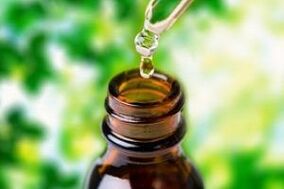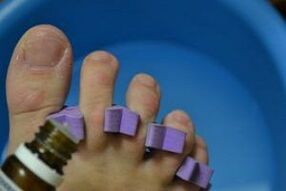
A pathogenic fungal microorganism can infect toenails if you visit a sauna or swimming pool, wear someone else's shoes or socks, or use pedicure tools that have not been disinfected.
The doctor makes a diagnosis based on a visual examination and the results of laboratory tests, after which he prescribes medication for toenail fungus. At the initial stage of the disease, external means work well - drops, creams, ointments, sprays and solutions.
In advanced situations, therapy will be lengthy and expensive - it will be necessary to use a number of drugs, including systemic pills.
Benefits of antifungal drops
The first of the advantages of drops was the convenience of their use. They come in compact bottles with a dispenser that allows you to accurately dose nail treatment drops without resorting to other medical accessories. The limiter on the dispenser allows you to spot apply the product without wasting the medicine in vain. This makes this form of the drug economical.
Safety is the second benefit of drops used to treat nail fungus. Drops act on the surface layers of the nail and skin without penetrating into the blood.
This makes them safe to use, unlike toxic drugs that are administered orally. Also, drops are gently applied to the nail without touching the surrounding skin and nail fold. This will eliminate irritation and allergies.
The third of the main advantages of medicines for the fungus in the form of drops is their effectiveness. The drug is well absorbed, does not stain clothes and does not smear. Drops directly affect the focus of the disease and quickly cope with the infection. Even a cheap antifungal drug can defeat advanced onychomycosis as part of complex therapy, eliminating the need to remove the nail.
How drops of the mushroom act

After identifying the causative agent of the disease, the doctor will tell you which drops from toenail fungus are most effective. Modern drugs act on the fungus in a complex way - in two directions at once:
- fungicidal - destroy fungal spores and fungi themselves;
- fungistatic - stops the reproduction of fungi at the cellular level.
Thanks to such complex preparatory work, it is possible to choose the optimal treatment for nails, fungi and bacteria do not have a chance to multiply on nails. An additional effect of the drops is the elimination of inflammation, the improvement of cell regeneration. When applied externally, the components of the drops accumulate in the nail plate in an optimal concentration. The drug blocks the synthesis of ergosterols - compounds that form the basis of the cell membrane of fungal microorganisms. As a result, the life process of fungi is disrupted, as a result of which pathogenic microflora die off.
As mentioned above, to achieve such a result, drops for nail fungus must be prescribed by a competent doctor. He prescribes the necessary drugs, dosage and selects the duration of the course of therapy.
Indications for the use of drops from onychomycosis
Drops are prescribed for damage to the nails on the hands and feet, with the manifestation of a fungus on the skin, signs of ringworm and pityriasis versicolor. Symptoms for which a dermatologist prescribes drops and other external nail preparations against fungus:
- irritation, peeling and redness of the skin between the toes;
- the appearance of itching and burning on the foot, between the fingers, near the nails;
- pain, signs of inflammation around the nail;
- the appearance of stripes, grooves and spots on the nail plate;
- Nail color change, deformation, thickening, delamination.
The above signs signal a fungal infection. If you immediately consult a doctor, the treatment will be inexpensive and you can quickly get rid of problems. Onychomycosis refers to infectious diseases, it is not just a cosmetic discomfort, but a danger to the carrier of the disease and others.
In the advanced stage, the fungus leads to intoxication of the body, a decrease in immunity and complications. The problem does not resolve itself, over time, without proper therapy, the disease progresses.
Contraindications for mushroom drops
Each drug, including antifungal drops, has its own contraindications and side effects. You must read the instructions before starting treatment. The main points that do not allow the use of drops are: individual intolerance to the drug, age up to 12 years, pregnancy and feeding, the presence of wounds and suppuration. Using drops can cause burning, itching, redness, and peeling.
There are not as many contraindications for drops as for systemic antifungal drugs, but a doctor should prescribe them.
Effective drops from the mushroom

First, the nails affected by the fungus are steamed, cleaned, dried, and only after that drops are applied.
The procedure is repeated twice a day, the course lasts up to six months (the period depends on the growth period of a healthy nail). Drops can cause skin peeling and itching, but you should not stop treatment.
Drops are prescribed at the initial stage of the disease and to prevent recurrence.
Reviews of using drops indicate their cost-effectiveness and ease of use. There are few contraindications, side effects rarely occur. But the drops will help to quickly neutralize the fungus and restore the beauty and health of the nail.
In advanced cases, drops are used as part of complex therapy, which includes taking pills, diet correction, hygiene procedures, medical pedicure, etc. The exact treatment regimen is selected by the doctor individually for each patient.


















